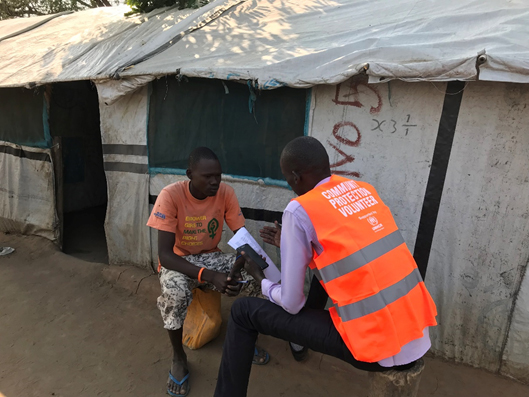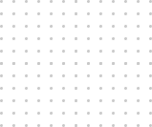The Approach
One of the six core functions of field clusters is to Inform HCT Strategic Decision-Making. It is defined by the IASC as preparing needs assessments and analysis of gaps (across and within clusters, using information management tools as needed) to inform priorities, identifying and finding solutions for (emerging) gaps, obstacles, duplication and cross-cutting issues and formulating priorities on the basis of analysis. Joint protection analysis is therefore at the heart of cluster work.
Coordinated analysis is regularly conducted by Protection Clusters, following the Protection Analytical Framework (PAF) and related Protection Cluster information management and analysis tools, to identify protection risks, needs, and capacity, as well as gaps. Coordination teams lead regular joint analysis sessions with key partners to review the context and latest risk-based analysis, undertake severity mapping and calculate the number of People in Need (PiN) of protection.
Results of this analysis help formulate priorities for strategic as well as operational planning, to address response gaps and duplication with operational partners, and to brief Humanitarian Country Team (HCT) and Inter-cluster Coordination Group (ICCG) on priority protection risks and needed response efforts.
Key actions undertaken by Protection Clusters include:
- Undertake regular protection data and information needs landscape analysis by mapping essential primary and secondary data sources against the PAF pillars and sub-pillars.
- Undertake joint protection analyses at national and sub-national levels with protection partners, AoRs, and other key stakeholders.
- Share and use results of joint protection analyses with operational partners to plan and coordinate protection response efforts.
- Provide capacity building sessions on protection analysis to partners on a regular basis to support high quality, collective analysis.
PAU and briefings
Protection Analysis Updates (PAUs), produced by Protection Clusters based on protection monitoring and other key data sources, are the cornerstone of collective analysis, response planning and advocacy for the Cluster. Coordination teams develop PAUs throughout the year based on joint analysis sessions with members, and the key messages and recommendations of the PAUs are often leveraged as part of advocacy efforts, from country to global levels.
Click here to access the PAU publications page and here for the PAU templates, guidance and tools.
The Humanitarian Program Cycle (HPC)
HPC starts with protection analysis, which informs strategic planning and resource mobilization for the Protection Cluster, and eventually translates into implementation of protection activities, and monitoring and evaluation of the Cluster’s activities and impact. One central element of the HPC for the Protection Cluster is the strategic planning process, which is materialized in both the Humanitarian Needs Overview (HNO) and the Humanitarian Response Plan (HRP).
In support of the HPC and in the preparation of its HNO and subsequent HRP, a joint intersectoral needs analysis will be produced by the HC/HCT in the framework of the so-called JIAF (Joint Intersectoral Analysis Framework) that is meant to inform and guide the work of country teams with the identification of inter-linkages between various drivers, sectors and humanitarian conditions.
Click here to access the GPC guidance and tools on Protection Analysis and JIAF related inter-sectoral analysis.
The Information & Analysis Working Group
In 2020, the GPC and its Strategic Advisory Group created an Information and Analysis Working Group (IAWG). The Working Group is comprised of diverse protection partners and experts. The IAWG is currently co-led by DRC, IRC and UNHCR and has the following aims:
- To help to ensure that improved analysis informs evidence-based decision-making and that protection remains central to all humanitarian interventions.
- To leverage collective expertise and action for enhanced protection cluster capacities in relation to information management and analysis, in support of quality protection outcomes in a collaborative and structured manner, ensuring that the protection trends and concerns of affected populations drive strategic and programmatic decision-making, and that protection remains central to humanitarian interventions.
- To act as a gathering space for partners and protection analysis practitioners to share best practices, experiences when utilizing protection analysis tools, and finding synergies between actors.
- To support protection clusters by providing standards, guidance, tools and capacity building on information management and analysis.
The IAWG has several different workstreams, where protection partners come together to work on more focused topics related to information and analysis. These workstreams include:
Human Rights (HR) Inclusion
Human Rights workstream in 2021 has supported pilot of human rights analysis as part of the protection analysis; produced a guidance video, infographics on stakeholder mapping and developed and piloted a training module on human rights analysis with field colleagues. In 2022, the workstream has ensured that human rights analysis is integrated in the PAUs and Humanitarian Programme Cycle (HPC) by developing minimum requirements for the national protection clusters. For more information, visit the Human Rights Engagement Task Team webpage.
Legal Aid Analytical Framework (LAAF)
During the past year the Task Team on Law and Policy (TTLP) has carried out the first phase of a project with a focus on legal aid in humanitarian settings. The Legal Aid Analysis Framework is a tool designed to assist protection, development, human rights, peace and humanitarian actors in conducting a comprehensive analysis of the legal aid landscape in a given country or territory affected by a crisis. As a next step, TTLP will be focusing on translation of the tools in French, Spanish, Arabic; piloting in relevant contexts, documenting the learning from them and documenting relevant good practices in the area of legal aid in humanitarian settings. For more information, visit the Legal Aid in Humanitarian Settings webpage.
Protection Analysis initiatives
The IAWG represents a space for protection partners to present, align, and coordinate protection analysis projects currently underway, through the joint effort of the GPC Information and Analysis Pillar and partners. Partners involved so far include ACF, DRC, IRC, Oxfam.
Inclusion – Disability and Ageing
Data disaggregation and analysis by gender, age and disability is fundamental to efficient humanitarian response planning. IAWG has established an inclusive information and analysis work stream to align data collection, disaggregation, and protection analysis methods with international best practice guidelines, and to support operationalisation of these practices at the field level.
Useful Links
Global Database
IAWG contact
Jasmine Ketabchi
Durable Solutions OfficerUNHCR - Field Protection Service, Department of International Protection
Mail: [email protected]
Brennan Webert
Protection AdvisorDRC - Global Protection Unit
Mail: [email protected]
Katie Juergens-Grant
Senior Protection Analysis SpecialistIRC - Violence Prevention and Response Unit (VPRU)
Mail: [email protected]





